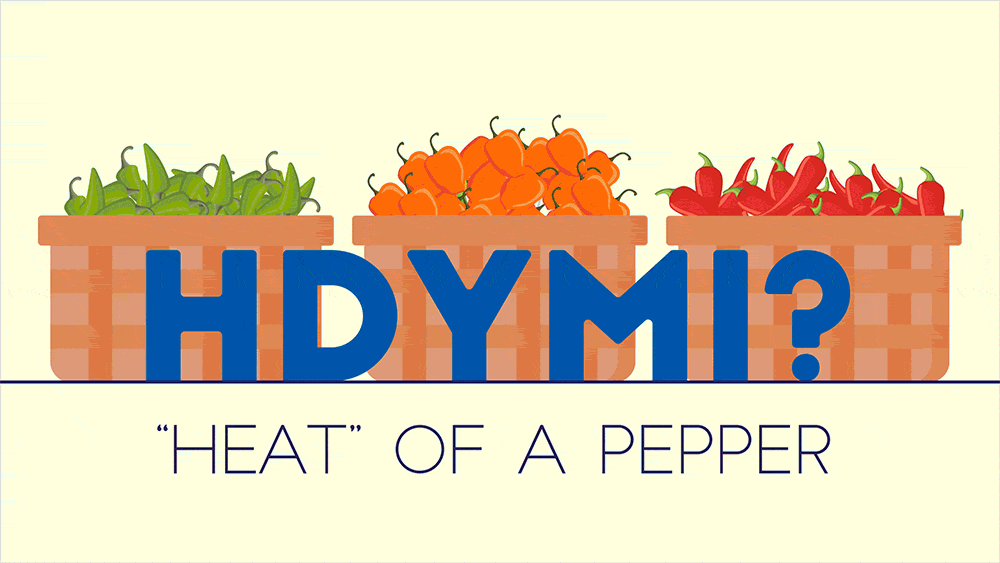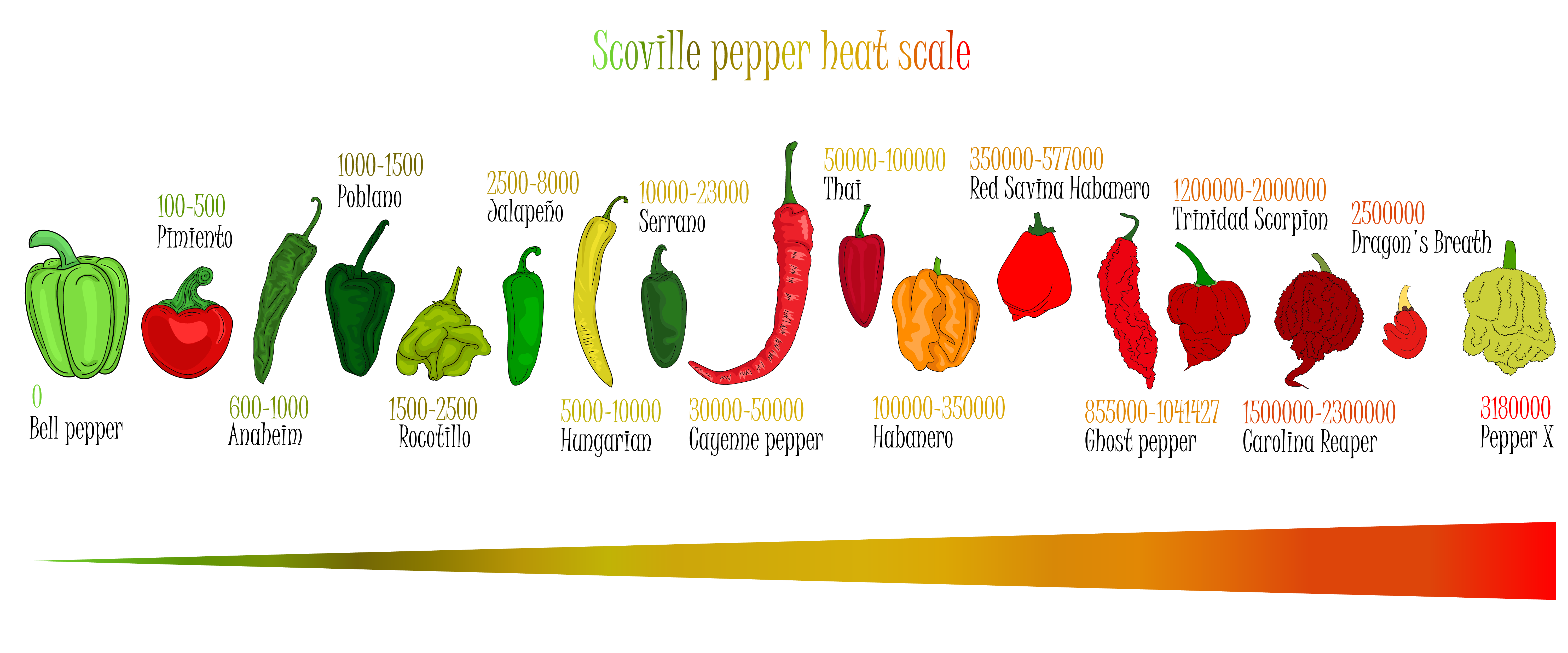How Do You Measure the ‘Heat’ of a Pepper?

Peppers can be found in a variety of dishes from salsa to salads, and they are known for adding flavor and often a kick of heat. It’s not real heat but instead a burning sensation in the mouth. The level of “heat” depends on the type of pepper that is used. Peppers range from mild to very hot: The pimento and poblano peppers have small kicks, while the Dragon's Breath and Pepper X are currently the two hottest reported peppers.
How can you tell how hot a pepper is without eating it first? A family of chemical compounds called capsaicinoids create the hot, burning feeling in your mouth and are mostly concentrated in the white lining of a pepper. The most abundant member of this family that is found in hot peppers is a compound called capsaicin. When you bite into a hot pepper or eat spicy foods, the capsaicin attaches to heat-sensing receptors in the mouth, releasing chemical messengers known as neurotransmitters that travel to the brain. These neurotransmitters trigger a false alarm that your mouth is on fire. It’s a bodily response that can produce sweating and watery eyes but does not cause physical harm.
Capsaicin is a chemical irritant and triggers the same response if it comes into contact with your skin, eyes or hands. But it can also have beneficial effects when used as pain relief in creams. Capsaicin reduces the sensation of pain by interacting with neurotransmitters and blocking their ability to send more pain signals to the brain.
A tool, called the Scoville Scale, expresses the level of pungency or heat of a pepper based on the levels of capsaicin in a pepper. The scale was invented in 1912 by a pharmacologist named Wilbur Scoville. It involves extracting the capsaicinoids from a pepper and diluting them with a solution of sugar and water until the heat of the pepper can no longer be tasted by a panel of professionally trained taste testers. More dilutions indicate a higher heat index rating and therefore a higher concentration of capsaicinoids. The test relies on the initial amount extracted from the pepper as well as the training of the taste testers.
The amount of heat is expressed in Scoville Heat Units (SHU), which represent the number of times the concentration of capsaicinoids needs to be diluted before it’s no longer detectable. For example, the jalapeno pepper is measured at 2,000-8,000 SHUs, which means it took 2,000-8,000 dilutions for that to happen. The scale starts at 0 SHUs with the bell pepper, which has no capsaicin compounds, to 3.2 million SHUs with Pepper X.
In between these two extremes are mild peppers, such as the poblano pepper at 1,000-1,500 SHUs, hot peppers, such as the Thai pepper at 50,000-100,000 SHUs, and extra hot peppers, such as the ghost pepper at 855,000-1,041,427 SHUs. Temperature, the type of soil, and location where the pepper was grown are all factors that affect the heat of a pepper.

The Scoville Scale can also be used to measure the pungency of other compounds such as resiniferatoxin, a molecule found in a cactus-like plant in Morocco, that has a measure of around 15 billion SHUs. Some capsaicinoid-containing pepper sprays used for self-defense and by the police are measured and advertised using the Scoville Scale.
The Scoville test is very subjective. Each member of a panel of taste testers could have different tolerance levels, and no pepper is exactly the same. The panel’s subjectivity is reflected in the wide range of SHU values for each pepper.
A modern method for measuring capsaicin is high-performance liquid chromatography (HPLC), an analytical chemistry technique used to separate, identify and quantify components in a sample. The process uses pumps to pass pressurized liquid containing the sample of interest through a column with an adsorbent, which separates the sample into its individual compounds. Scientists can accurately measure the amount of capsaicin once it is isolated from other compounds.
After researchers obtain a concentration of the capsaicin using HPLC, they can convert that to a value on the Scoville Scale. This method is more reproducible and reduces the subjectivity involved when using trained taste testers. This technique, along with other methods, is used by the food industry as a standard of measurement. But you may find that hot-pepper-eating competitions may still use taste-testing panels.
Restaurant owners, people in the food industry, or anyone bottling their own hot sauce can find the Scoville Scale useful in determining the spiciness or heat levels of their own food items. New peppers are introduced regularly, by combining different varieties in the garden, for example. So, the next time you’re at a restaurant or find yourself in a hot-pepper-eating contest, you can tell your friends that the heat level has a number — knowing that it’s made possible with a pinch of measurement science.

